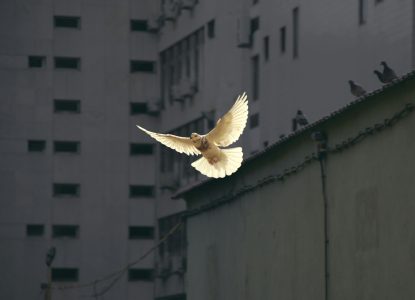By Micheal Swain, Executive Director, Freedom of Religion South Africa
– – –
Michael Swain delivered these comments at the International Center for Law and Religion Studies symposium October 7th, 2025.
Setting the Constitutional Context
South Africa is a constitutional democracy. The Constitution is our highest law, and all organs of State are bound by it. It defines both the values and the limits of State power. Government may interfere with fundamental freedoms only where the limitation is reasonable, justifiable, and the least restrictive means to achieve a legitimate purpose (Section 36).
Religious freedom sits at the heart of this order. Section 15 protects freedom of religion, belief, and opinion, within a basket of rights foundational to any true democracy. Section 16 safeguards freedom of expression so that people of faith may speak and live according to their deepest convictions.
As our Constitutional Court has affirmed, freedom of religion means more than holding private beliefs—it includes the right to live out, express, and manifest one’s faith openly, publicly or privately, without fear of sanction or interference, so long as it accords with the broader values of the Constitution. The Court has also been clear that Section 15 protects even beliefs that may appear bizarre, illogical, or incapable of scientific proof; what matters is the sincerity of the belief, not its reasonableness. In short, the Constitution protects the believer, not the belief.
Faith is not solitary; it is exercised in community. Sections 18 and 31 protect the right to associate freely, to form faith communities, and to live out shared convictions together—without fear of interference or sanction. And Section 9 guarantees equality before the law and protection from unfair discrimination on grounds of religion—because equality is not sameness; it requires respect, and at times, accommodation.
On paper, South Africa offers robust protections for religious freedom. In practice, they are being eroded—sometimes unintentionally, sometimes deliberately—by laws and policies that fail the Constitution’s tests of proportionality and least-restrictiveness. Consider three live examples.
Freedom of Expression – The Hate Speech Act
Freedom of expression is the oxygen of public debate. Yet it now stands under pressure from the Prevention and Combating of Hate Crimes and Hate Speech Act (May 2024). The Act criminalises expression that “advocates hatred and incites harm” across many grounds—including controversial areas like gender —with penalties of up to three years’ imprisonment for a first offence.
The Constitution sets a high threshold for hate speech. Section 16(2) excludes only advocacy of hatred based on race, ethnicity, gender or religion that constitutes incitement to cause harm. In Qwelane v SAHRC (2021) the Constitutional Court struck down the Equality Act’s “hurtful” standard as vague and overbroad, affirming that only advocacy of hatred that incites harm—not speech that merely offends, shocks, or disturbs—may be restricted.
By contrast, the new Act is dangerously vague. The word “hate” is not defined, while the threshold includes “substantial emotional harm”—inherently subjective and ripe for activist misuse. It risks turning theological disagreement or faith-based statements into crimes.
Although a “bona fide religious expression” clause was added, it is circular—protecting you only if your speech is not, in fact, hate speech under the Act—thus offering no real shield. Pastors, imams, and rabbis should not fear imprisonment for preaching Scripture that conflicts with cultural orthodoxy, provided it does not call for harm.
Constitutionally, proportionality is decisive. Combating hatred and violence is a legitimate aim; but Section 36 demands the least restrictive means. When criminal law invades the pulpit, the classroom, or the dinner-table debate, it crosses a constitutional line. Internationally, the UN Rabat Plan of Action (2012) echoes this: criminalisation should be reserved for the most extreme cases of intentional incitement to violence or discrimination. Civil remedies, education, and dialogue suffice for the rest. To criminalise belief-based expression is not to protect democracy—it is to suffocate it.

Parental Rights – The Early Childhood Education (ECE) Toolkit
The second challenge concerns parental rights in education, especially within the public system. The State recognises parents—not bureaucrats—as the primary moral educators of their children. Yet this principle is being undermined within the Department of Basic Education (DBE) itself.
The Social Inclusion and Equity in Education Directorate, a DBE unit with activist leanings and significant foreign donor funding, is implementing an Early Childhood Education (ECE) Toolkit as a teacher-training programme to introduce “inclusivity and diversity” in pre-primary and primary classrooms. In practice, it promotes a transgender ideology: teachers are trained to avoid “he/she” and to use “they/them” to demonstrate to very young children that you cannot tell if someone is a boy or a girl by looking.
The DBE argues that since this is internal training, it does not need to consult parents. However, the effect on children—some as young as three or four—is direct, influencing values and worldviews that may conflict with those at home. This also contradicts the DBE’s own White Paper (1995), which affirms the primary role of parents in moral and religious development. Even more concerning, officials describe children as being in an “unequal power relationship” with parents, asserting authority to “supplement” parental instruction with so-called “constitutional values.”
This marks a profound shift: the State is recast, not as partner, but as a competing moral authority. Preventing bullying and promoting respect are legitimate aims—but they can be achieved through neutral anti-bullying policies, case-by-case accommodation, and genuine parental engagement, without imposing a contested ideology on the youngest, most impressionable learners. This is not education—it is indoctrination. Constitutionally, it fails Section 36: there is no demonstrable necessity and it is far from the least restrictive means.
Autonomy of Religion – The CRL Rights Commission
The third and most serious challenge concerns the autonomy and independence of religious institutions.
The CRL Rights Commission—a Chapter 9 body meant to promote and protect religious communities—has long pushed State-regulated “peer review committees” to control the religious sector. On 2 October 2025, it launched the Section 22 Committee for the Christian Sector at Rhema Bible Church, to investigate abuses and recommend a legal or legislated framework for the sector.
Beneath the language of “self-regulation” lies a profound shift in Church–State relations. The CRL Chair has framed ministry as a “profession” that should be regulated, aiming to “eliminate abuse” in religious settings. Given history, this implies State vetting and licensing of pastors, priests, imams, and rabbis. The structure would be State-appointed, State-funded, and State-controlled—deciding who is “qualified” to minister. That strikes at Section 15 (freedom of religion) and Sections 18 & 31 (associational and communal life).
This proposal is unconstitutional, unnecessary, and unworkable:
- Unconstitutional: It empowers a State body to decide who is—or is not—a legitimate religious leader, collapsing the line between protecting religion and controlling it.
- Unnecessary: Every cited abuse—assault, fraud, sexual exploitation—is already a crime. The problem is enforcement, not legislative gaps.
- Unworkable: South Africa’s religious landscape is vast and diverse. No bureaucracy can license and monitor tens of thousands of independent bodies without trampling independence and suffocating diversity.
Parliament recognised this before. The CRL’s 2017 “Commercialisation of Religion” Report proposing Peer Review Councils triggered six days of hearings before the COGTA Portfolio Committee. In 2018 the Committee rejected the CRL’s proposals—urging voluntary accountability instead. The sector responded: SACOFF (2021) now unites 200+ organisations representing 5+ million Christians, and TEASA initiated a Code of Conduct grounded in the Religious Freedom Charter (2010)—real self-regulation by the faith community, for the faith community.
There remains no legal or other justification for reviving a rejected scheme, and the push exceeds the CRL’s mandate under the CRL Act.
The Constitution protects freedom of religion, not freedom from religion. The CRL’s proper role is to educate, facilitate, and defend that freedom—not to place faith under State supervision.
Preserving the Spirit of Freedom
Across these three fronts—the Hate Speech Act, the ECE Toolkit, and the CRL’s regulatory agenda—the pattern is the same: a legitimate social concern is being leveraged to justify a disproportionate intrusion into constitutional freedom.
South Africa’s democratic strength lies not in uniformity but in pluralism—our capacity to live together in peace under a Constitution that protects profoundly different worldviews. If we forget this—if offence becomes the measure of criminal law, if bureaucrats override the moral authority of parents, or if the State decides who may preach and what they may say—we will have lost any meaningful right to religious freedom – perhaps forever.
Thank you.
– – –
Michael Swain was raised in England, graduating from the University of Bristol with an honors degree in law before immigrating to South Africa in 1983. He is a cofounder and former vice president of the Every Nation (formerly His People) movement of churches and ministries. Mr. Swain has spent more than 30 years in Christian ministry in South Africa, Europe, and the United States. He has also enjoyed success as a businessman, having founded and run companies in diverse areas, including software development, events management, marketing, and communications. Mr. Swain currently serves as the executive director and primary spokesperson for Freedom of Religion South Africa (FOR SA). He is also an allied lawyer with the Global Advocacy Alliance.


